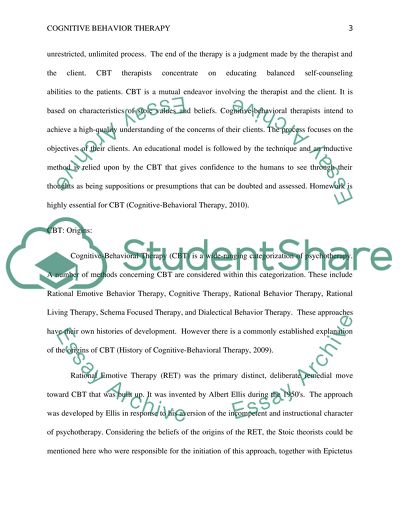Cite this document
(“Method of Cognitive Behavior Therapy Essay Example | Topics and Well Written Essays - 1500 words”, n.d.)
Method of Cognitive Behavior Therapy Essay Example | Topics and Well Written Essays - 1500 words. Retrieved from https://studentshare.org/psychology/1471752-cognitive-behavior-therapy-origins-and-current
Method of Cognitive Behavior Therapy Essay Example | Topics and Well Written Essays - 1500 words. Retrieved from https://studentshare.org/psychology/1471752-cognitive-behavior-therapy-origins-and-current
(Method of Cognitive Behavior Therapy Essay Example | Topics and Well Written Essays - 1500 Words)
Method of Cognitive Behavior Therapy Essay Example | Topics and Well Written Essays - 1500 Words. https://studentshare.org/psychology/1471752-cognitive-behavior-therapy-origins-and-current.
Method of Cognitive Behavior Therapy Essay Example | Topics and Well Written Essays - 1500 Words. https://studentshare.org/psychology/1471752-cognitive-behavior-therapy-origins-and-current.
“Method of Cognitive Behavior Therapy Essay Example | Topics and Well Written Essays - 1500 Words”, n.d. https://studentshare.org/psychology/1471752-cognitive-behavior-therapy-origins-and-current.


